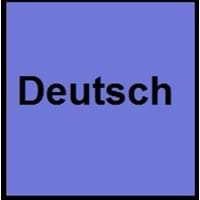Navajo vs German
Countries
United States of America
Austria, Belgium, Germany, Italy, Liechtenstein, Luxembourg, Switzerland
National Language
United States of America
Germany
Second Language
Not spoken in any of the countries
North Dakota, United States of America
Speaking Continents
North America
Europe
Minority Language
Not spoken in any of the countries
Czech Republic, Denmark, Former Soviet Union, France, Hungary, Italy, Namibia, Poland, Romania, Slovakia, Slovenia
Regulated By
Not Available
Council for German Orthography
Interesting Facts
- Navajo language is tonal language, as it heavily relies on pitch to distinguish between similar words.
- Navajo ethinc group is 2nd largest Native American group.
- One of the large group of Indo-Germanic languages is German.
- The second most popular Germanic language spoken today behind English is German language.
Similar To
Apache Language
Dutch, Danish, Norwegian, Swedish and English Languages
Derived From
Not Available
Albanian Languages
Alphabets in
Navajo-Alphabets.jpg#200
German-Alphabets.jpg#200
Writing Direction
Not Available
Left-To-Right, Horizontal
How Are You?
Ąąʼ haʼíí baa naniná?
Wie geht es dir?
Good Night
Yá'át'ééh hiiłchi'į'
gute Nacht
Good Evening
Yá'át'ééh ałní'íní
guten Abend
Good Afternoon
Yá'át'ééh
guten Tag
Good Morning
Yá'át'ééh abíní
guten Morgen
Sorry
Not available
Verzeihung
I Love You
Ayóó ánííníshí
Ich liebe dich
Excuse Me
Shoohá
Entschuldigung
Dialect 1
Navajo1
Swiss German
Where They Speak
Arizona
Switzerland
How Many People Speak
Not Available
Dialect 2
Navajo2
Swabian German
Where They Speak
New Mexico
Germany
How Many People Speak
Not Available
Dialect 3
Navajo3
Texas German
Where They Speak
Utah
Texas
How Many People Speak
Not Available
Speaking Population
Not Available
Second Language Speakers
Not Available
Native Name
Diné Bizaad / Dinék'ehjí
Deutsch
Alternative Names
Navaho
Deutsch, Tedesco
French Name
navaho
allemand
German Name
Navajo-Sprache
Deutsch
Pronunciation
Not Available
[ˈdɔʏtʃ]
Ethnicity
Navajo people
Germans
Origin
1500 CE
6th Century AD
Language Family
Dené–Yeniseian Family
Indo-European Family
Subgroup
Athapascan
Germanic
Branch
Not Available
Western
Early Forms
No early forms
No early forms
Standard Forms
Navajo
German Standard German, Swiss Standard German and Austrian Standard German
Language Position
Not Available
Signed Forms
Navajo Sign Language
Signed German
Scope
Individual
Individual
ISO 639 6
Not Available
deus
Glottocode
nava1243
high1287, uppe1397
Linguasphere
No data available
52-ACB–dl & -dm
Language Type
Living
Living
Language Linguistic Typology
Subject-Object-Verb
Subject-Object-Verb, Subject-Verb-Object
Language Morphological Typology
Fusional, Polysynthetic, Synthetic
Fusional, Synthetic
Navajo and German Language History
Comparison of Navajo vs German language history gives us differences between origin of Navajo and German language. History of Navajo language states that this language originated in 1500 CE whereas history of German language states that this language originated in 6th Century AD. Family of the language also forms a part of history of that language. More on language families of these languages can be found out on Navajo and German Language History.
Navajo and German Greetings
People around the world use different languages to interact with each other. Even if we cannot communicate fluently in any language, it will always be beneficial to know about some of the common greetings or phrases from that language. This is where Navajo and German greetings helps you to understand basic phrases in Navajo and German language. Navajo word for "Hello" is Yá'át'ééh or German word for "Thank You" is Danke. Find more of such common Navajo Greetings and German Greetings. These greetings will help you to be more confident when conversing with natives that speak these languages.
Navajo vs German Difficulty
The Navajo vs German difficulty level basically depends on the number of Navajo Alphabets and German Alphabets. Also the number of vowels and consonants in the language plays an important role in deciding the difficulty level of that language. The important points to be considered when we compare Navajo and German are the origin, speaking countries, language family, different greetings, speaking population of these languages. Want to know in Navajo and German, which language is harder to learn? Time required to learn Navajo is 88 weeks while to learn German time required is 30 weeks.





